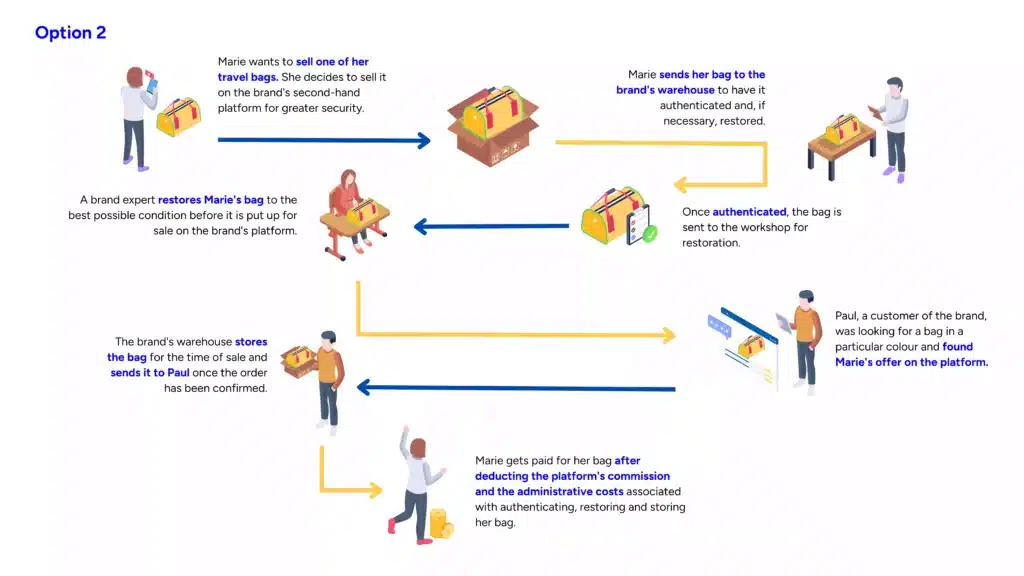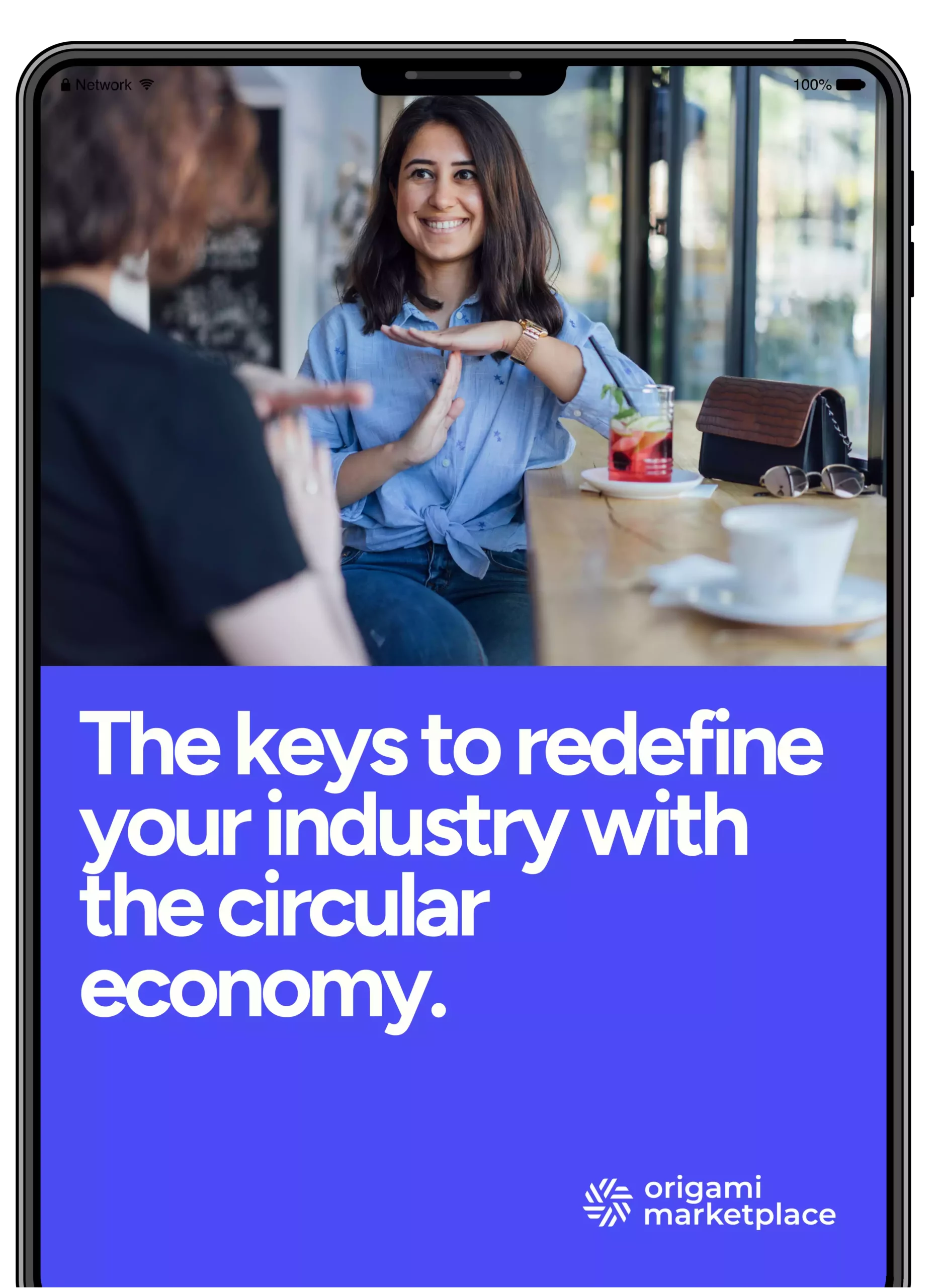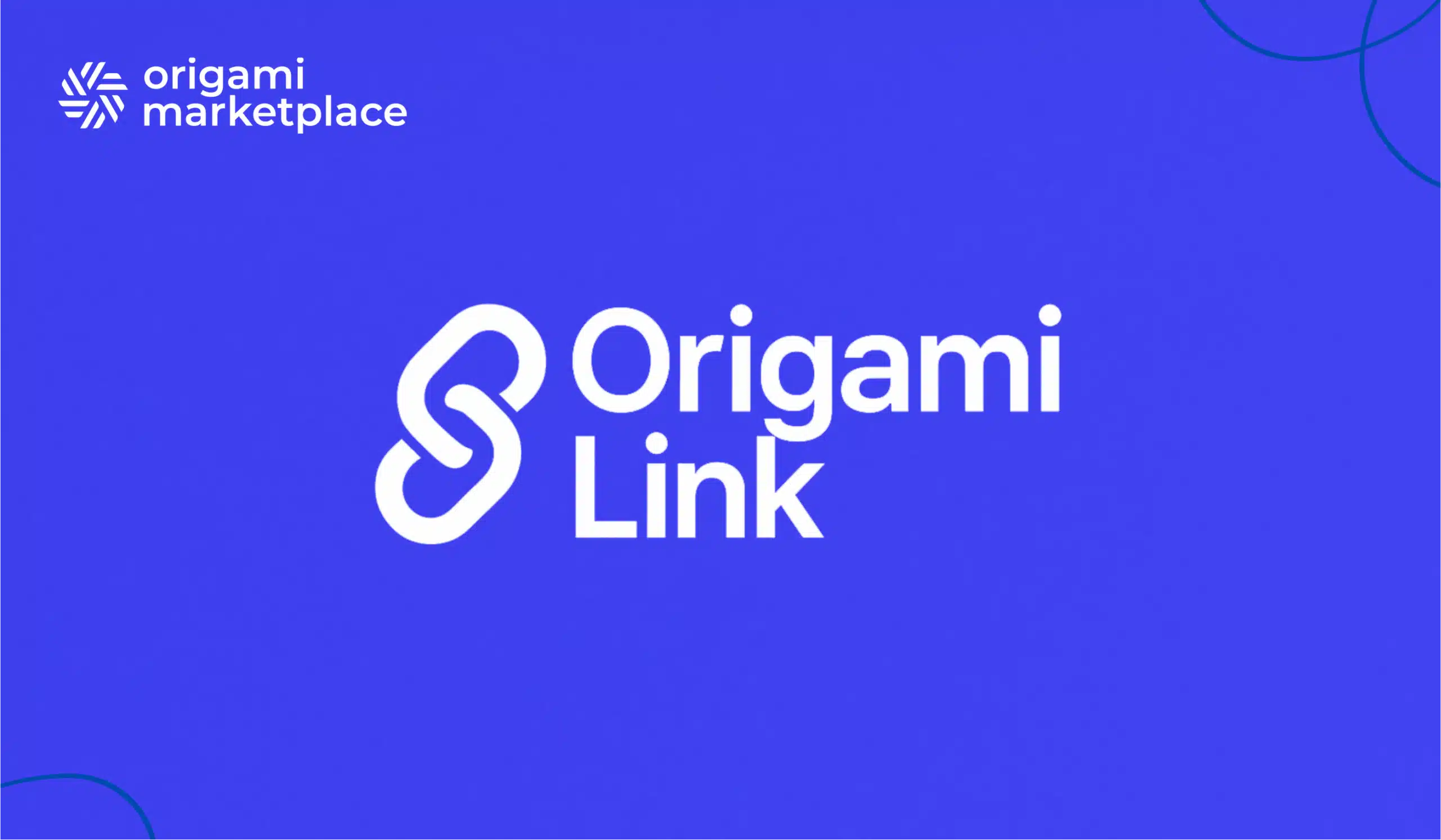Luxury brands: 10 reasons to launch your own second-hand platform
- Emeline Kerloch
- 9 minutes reading

The market for second-hand luxury goods is booming and luxury brands can no longer afford to ignore this trend. However, many brands are still not capitalising on this market, leaving the majority of revenue to mainstream marketplaces. Discover 10 reasons why luxury brands should embrace this growth opportunity and develop their own second-hand platforms.
- Total control of the company’s brand image
- Meeting new consumer expectations
- Become part of the circular economy and extend the life cycle of products
- Create new revenue streams
- Attract a wider and more diverse audience
- Highlight the heritage and history of the brand
- Support customer loyalty through redemption and incentive programmes
- Support customer loyalty through redemption and incentive programmes
- Strengthen its commitment to sustainability
- Differentiation and competitive advantage
1. Total control of the company's brand image.
Lorsque la revente de produits de seconde main est laissée à des plateformes tierces, les marques de luxe perdent le contrôle sur la façon dont leurs articles sont présentés et distribués. Pour les entreprises de luxe, dont la réputation repose sur l’excellence, la qualité et l’expérience client, il est important de garder un contrôle total sur tous les aspects de la chaîne de valeur, même sur le marché de l’occasion.
En développant leurs propres plateformes, les marques peuvent :
- Assurer l’authenticité des produits : Lutter contre les contrefaçons est un enjeu majeur dans le secteur du luxe. En proposant un service de revente, les marques peuvent garantir que seuls des articles authentiques sont vendus. Elles peuvent même intégrer des technologies de traçabilité, comme la blockchain, pour certifier chaque produit et offrir une transparence totale aux acheteurs.
- Contrôler la qualité des articles : Les produits sont inspectés et certifiés par la marque avant d’être remis en vente, garantissant ainsi que seuls des articles en bon état, répondant aux standards de qualité, sont proposés. Cela protège la perception de la marque et assure aux clients une expérience cohérente.
- Surveiller les pratiques de revente : En proposant leur propre plateforme, les marques peuvent également mieux identifier les revendeurs professionnels qui profitent de la demande élevée pour faire grimper les prix. Cela permet de garder un marché plus juste et plus transparent, aligné avec les valeurs de la marque.
By developing their own platforms, brands can ensure product authenticity: the fight against counterfeiting is a major challenge in the luxury sector. By offering a resale service, brands can guarantee that only authentic items are sold. They can even integrate traceability technologies, such as blockchain, to certify each product and offer complete transparency to buyers.
- Control product quality: products are inspected and certified by the brand before being released for sale, ensuring that only items that are in good condition and meet quality standards are offered. This protects brand perception and ensures a consistent customer experience.
- Monitor resale practices: by offering their own platform, brands can also better identify professional resellers who are taking advantage of high demand to drive up prices. This keeps the market fairer and more transparent, in line with the brand’s values.
Here are two examples of processes that allow a brand to control the products sold on its platform, while ensuring the best possible customer experience.


2. Meeting new consumer expectations.
New generations, especially Millennials and Gen Z, are more sensitive to issues of sustainability and social responsibility. They are looking for ways to reduce their environmental footprint and prefer to consume in a more sustainable way, moving towards responsible consumption.
Buying used fits perfectly with these values:
Environmental commitment: by embracing the secondhand market, luxury brands are demonstrating their commitment to the circular economy and their desire to reduce waste. This helps to retain existing customers and attract those who value sustainable practices.
A new image for second-hand: where pre-owned was once seen as a downgraded alternative, it is now seen as a smart and ethical choice. Luxury products, which are often timeless and designed to last, fit perfectly into this logic.
3. Become part of the circular economy and extend the life cycle of products.
Luxury products are often made with high-quality materials and traditional craftsmanship, giving them a unique longevity. Promoting resale extends the life of these products and maximises their value:
- Optimising value: by encouraging consumers to resell rather than keep unused items, brands can extend the lifecycle of their products and maximise their profitability. Resale becomes a way to give products a second life while retaining their value.
- Expanding the product range: some brands, such as Christofle, have been able to tap into this market by offering the resale of vintage collections that are not currently available as new. This enriches their catalogue without compromising sales of new products and offers consumers the opportunity to acquire rare and sought-after pieces.
Download our ebook
Find out the key figures of the second-hand and circular economy sectors. This white paper explores the opportunities, go-to-market strategies and tools you can use to get your platform off the ground.
4. Create new revenue streams.
The second-hand market is growing at a phenomenal rate and is an increasingly important part of the luxury sector. By launching their own pre-owned platforms, brands can recapture market share that was previously out of reach:
- Monetise the opportunity: Rrather than seeing other players profit from the resale of their products, brands can generate additional revenue by capitalising on their own platform. This creates a new source of recurring revenue.
- Loyalty and retention: when a customer resells a product through the brand’s platform, they are encouraged to remain loyal to the brand’s system, encouraging future sales of new or second-hand products.
5. Attract a wider and more diverse audience.
Les produits de luxe neufs ont souvent un prix élevé, ce qui les rend inaccessibles pour une partie importante des consommateurs. La seconde main permet aux marques de luxe de rendre leurs articles plus abordables et de toucher un public plus large :
- Porter l’aspiration au luxe à plus de clients : En rendant les produits de luxe plus accessibles, les marques peuvent attirer des clients qui n’auraient pas acheter du neuf. C’est une porte d’entrée pour les jeunes consommateurs qui aspirent à posséder des articles de qualité et à découvrir l’univers du luxe.
- Créer de nouveaux parcours d’achat : L’achat de produits d’occasion peut être le premier pas vers des achats de produits neufs à l’avenir. En offrant une première expérience positive avec la marque, les consommateurs peuvent évoluer et devenir des acheteurs réguliers de produits neufs.
6. Highlight the heritage and history of the brand.
The great luxury houses are distinguished by their unique heritage and rich history.
Offering vintage or second-hand items is the perfect way to celebrate this heritage:
- Uniqueness and exclusivity: vintage or second-hand products often embody timeless designs and iconic collections. By showcasing these items, brands cultivate a sense of uniqueness and exclusivity, enhancing their prestige.
- Cultivate an emotional connection: each vintage piece tells a story and can foster an emotional connection with customers by evoking a particular era or memory. This enriches the relationship with the customer and creates a lasting emotional bond.
Download our free marketplace specifications template.
Here you will find all the essential features to succeed in your C2C, B2C or B2B multi-vendor marketplace. This model provides a simple backlog to guide you through each step of your project.
7. Collect strategic data on purchasing behaviour.
Second-hand platforms are a valuable source of information about consumer preferences and behaviour:
- Understanding demand: by monitoring which products sell well on second-hand platforms, brands can identify the most popular and long-lasting models or collections. This information can be used to guide design and production strategy.
- Adapt future collections: resale data can be used to adjust production strategy to better meet market expectations. For example, if certain colours or designs are consistently in demand, this can influence future creations.
8. Support customer loyalty through redemption and incentive programmes.
Developing trade-in programmes allows customers to sell their old items in exchange for credits towards future purchases. It’s a strategy that builds loyalty and extends the customer relationship:
- Smooth, integrated customer experience: offering a simple, transparent resale solution encourages customers to stay within the brand’s ecosystem. They know they can buy and resell with confidence and ease.
- Enhanced loyalty programmes: credits earned from reselling can be used to purchase new products, building loyalty and increasing the likelihood of future purchases.

9. Strengthen its commitment to sustainability.
Consumers are increasingly aware of the environmental impact of their purchases. By incorporating pre-owned products into their offering, luxury brands are reinforcing their commitment to sustainability:
- Reduce waste: extending the life cycle of products helps reduce waste and encourages more responsible consumption.
- Transparency and traceability: using technologies such as blockchain to certify used products builds customer trust and demonstrates a commitment to more ethical production and resale.
10. Differentiation and competitive advantage.
By creating their own resale platforms, luxury brands can differentiate themselves from competitors who have not yet adopted this model:
- Innovative and forward-thinking: offering a complete ecosystem where customers can buy, sell and exchange products while remaining within the brand’s universe creates an enriched and complete experience. This strengthens the brand’s position as an innovation leader.
- Securing loyalty and broadening the customer base: this initiative makes it possible to capture new market share while retaining the loyalty of existing customers who choose to remain within the brand’s ecosystem.
To conclude.
The second-hand market is not just a trend for luxury brands, but a major strategic opportunity. By adopting this model, they can meet the expectations of a new generation of sustainability-conscious consumers, generate new revenues, broaden their customer base and strengthen their market positioning. The integration of pre-owned products is thus becoming an essential lever for maintaining and increasing their relevance in a fast-changing world.
👋 Future online marketplace operator!
Discover how the Origami Marketplace API and partner network can transform your business, regardless of size, with its innovative solution based on the marketplace model.




